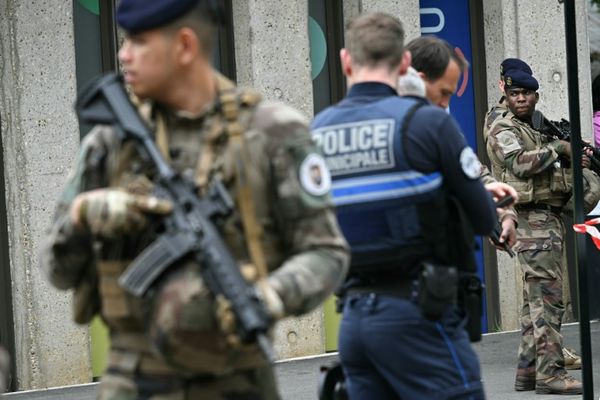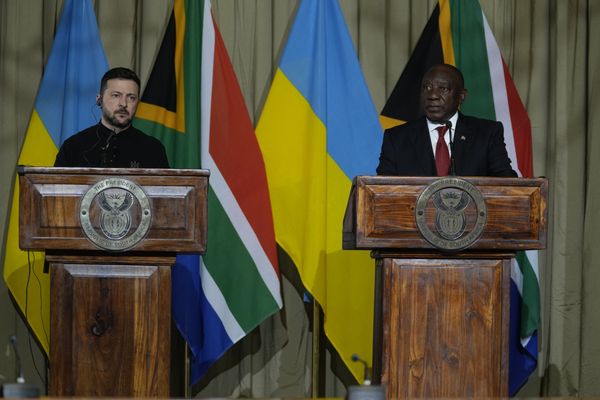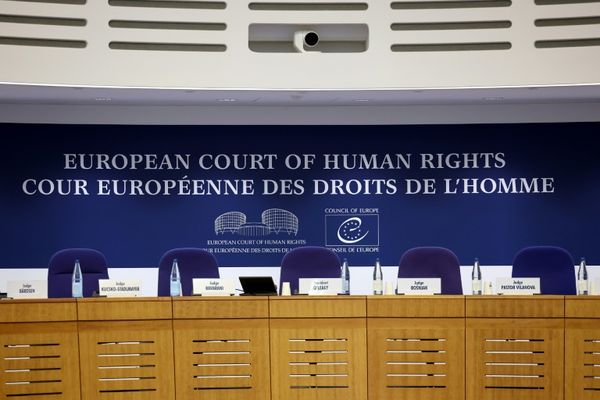Wildfires raging in South Korea doubled in size today, with authorities calling them the country’s worst fire disaster on record.
Since Friday, more than 35,810 hectares (88,488 acres) of land in the southeast has been scorched, the disaster response centre said. The fire that began in Uiseong county is now the biggest single forest fire in South Korea’s history, surpassing the 24,000-hectare blaze of March 2000.
At least 27 people were confirmed dead, including a pilot of a firefighting helicopter which crashed yesterday.
Hundreds of structures have been burnt or damaged, including historic 7th-century Buddhist temple that was reduced to ashes as the fire continued to expand.
“We are nationally in a critical situation with numerous casualties because of the unprecedented rapid spread of forest fires,” acting president Han Duck Soo said at a government response meeting.
The Uiseong fire spread rapidly on Wednesday, reaching Yeongdeok on the east coast, 51km away, in just 12 hours. While light rain is forecast in the southwest, most affected areas are expected to receive less than 5mm, offering little relief.
Key Points
- South Korea's wildfire doubles up in size, becomes the largest on record
- 'We are nationally in a critical situation,' says South Korea's acting president
- Death toll climbs to 27
- Ancient temple destroyed in South Korea's wildfires
- Wildfires threaten historic temples and UNESCO heritage sites
South Korea's wildfire doubles up in size, becomes the largest on record
07:58 , Stuti MishraWildfires raging in South Korea doubled in size today from a day earlier, as authorities called the blazes the country's worst fire disaster.
More than 35,000 hectares (88,000 acres) have been charred or were still burning in the largest of the fires that began in the central Uiseong county, making it the biggest single forest fire in South Korea's history. The previous record was 24,000 hectares (59,000 acres) in a March 2000 fire.
The wildfires that originated in Uiseong have been moving rapidly eastward, spreading almost to the coast, carried by gusty winds and with dry conditions aggravating the situation.
The Uiseong fire began spreading quickly yesterday, reaching the coastal county of Yeongdeok 51km (32 miles) away in just 12 hours, said Won Myung-soo, director of satellite imagery analysis for the national forestry service.
'We are nationally in a critical situation,' says South Korea's acting president
08:05 , Stuti MishraSouth Korea's acting president Han Duck-soo called the wildfires “unprecedented” yesterday and said the crisis was “rewriting the record books for the worst wildfires in our nation's history”.
"Damages are snowballing," Mr Han said. "There are concerns that we'll have wildfire damages that we've never experienced, so we have to concentrate all our capabilities to put out the wildfires in the rest of this week."
Speaking at a government response meeting today, he said: "We are nationally in a critical situation with numerous casualties because of the unprecedented rapid spread of forest fires."
In photos: Burnt out houses, temples and destroyed villages
08:30 , Stuti Mishra



Firefighters struggle to contain fire
08:49 , Stuti MishraThe military has released stocks of aviation fuel to help keep firefighting helicopters flying to douse flames across mountainous regions in the southeast of the country, where fires have been burning now for nearly a week.
More than 120 helicopters have been deployed in three regions battling the blazes, the safety ministry said. South Korea relies on helicopters to fight forest fires because of its mountainous terrain. A helicopter pilot died yesterday after crashing while trying to tackle a blaze.
Ancient temple destroyed in South Korea's wildfires
09:15 , Stuti MishraOver 300 structures, including houses, factories and a 1,300-year-old Buddhist temple have been destroyed, officials said on Wednesday.
The Gounsa temple, founded in 681 during the Silla Dynasty, was destroyed in Uiseong. Heritage officials said some of the site’s national treasures, including an eighth-century stone Buddha statue, were removed before the flames reached the main wooden buildings.

At least 24 dead and ancient temple destroyed as South Korea hit by wildfires
What caused the wildifires?
09:30 , Stuti MishraThe cause of the wildfire isn't clear yet, but it is suspected that the fires were triggered by human activity, possibly sparks from welding or people clearing dry grass near ancestral tombs, some reports said.
However, officials say the rapid spread of the flames and unprecedented scale was a result of unusually hot and dry conditions.
"This wildfire has once again exposed the harsh reality of a climate crisis unlike anything we've experienced before," disaster chief Lee said.
"The affected areas have seen only half the average rainfall, coupled with unusually strong winds, which have drastically accelerated the spread of the fire and intensified the damage," he said.
Higher temperatures amplified by human-caused climate change contributed to the existing seasonally dry conditions, "turning dry landscapes into dangerous fire fuel" in the region, the Climate Central group, an independent body made up of scientists and researchers, said in a report.
Wildfires threaten historic temples and UNESCO heritage sites
09:50 , Stuti MishraThe wildfires have carved a trail of devastation through an area equivalent to about half the area of Singapore, ravaging everything in their path including historic temples and homes in the mountainous forest regions of North Gyeongsang province.
Teams of firefighters are on standby to protect the UNESCO World Heritage sites of Hahoe Village and the Byeongsan Confucian Academy in the city of Andong, if a blaze jumps the stream that flows around them.
The picturesque folk village has traditional Korean houses, many with thatched roofs, while the Confucian academy dates back more than 450 years.
The fires have already badly damaged other historic sites, including much of Gounsa Temple in Uiseong, which was built in 681.
"The buildings and remains of what Buddhist monks have left over 1,300 years are now all gone," said Deungwoon, the head of the Gounsa Temple.

Death toll climbs to 27
10:10 , Stuti MishraDeath toll from South Korea's wildfires rose to 27 today as officials confirmed three more deaths.
The fatalities include a pilot whose helicopter crashed during efforts to contain a fire yesterday and four firefighters and other workers who died earlier after being trapped by fast-moving flames.
Authorities haven't disclosed details of the civilian dead, except that they are mostly in their 60s or older who found it difficult to escape quickly or who even refused orders to evacuate.
They suspect human error caused several of the wildfires, including cases where people started fires while clearing overgrown grass from family tombs or with sparks during welding work.
Video: Deadly wildfires burn in South Korea
10:34 , Stuti MishraClimate crisis fuelling early wildfire surges in 2025, expert warns
11:12 , Stuti MishraThe current wildfires in South Korea and California this year are part of a growing global pattern driven by climate change, according to experts.
“Only three months into 2025, we’ve already witnessed record-breaking wildfire activity in multiple regions,” said Dr Kimberley Simpson, fellow at the University of Sheffield’s School of Biosciences. “As climate change drives rising temperatures and alters rainfall patterns, the conditions that give rise to these devastating fires are becoming more frequent.”
Dr Simpson said that both California’s January fires and South Korea’s ongoing blazes were preceded by unusually warm, dry weather, leaving vegetation dangerously flammable. “Strong winds in both cases spread the flames rapidly and made firefighting far more difficult,” she said.
Mapped: Key areas affected by burning wildfires in South Korea
12:00 , Stuti MishraSouth Korea moves national treasures to safety as ‘worst wildfires in history’
13:00 , Stuti MishraRaging wildfires have forced South Korea to relocate 15 national treasures and cultural artefacts, including wooden printing blocks and Buddha paintings, from major temples in the North Gyeongsang province to safer locations.
The relocated items include a seated stone Buddha from the now-destroyed Goun temple in Uiseong.
The Korea Heritage Service confirmed that Yeongsu Hall and Gaunru Pavilion at the Goun temple were destroyed, leaving only nine of its 30 buildings intact. So far, 15 heritage pieces have been damaged, with the hardest-hit areas being Uiseong, Andong and Cheongsong in North Gyeongsang.
Read more:

South Korea moves national treasures to safety after ‘worst wildfires in history’
We’re pausing our live coverage of the South Korea fires but keep checking independent.co.uk for the latest updates.







